| 8. | International Cooperation for Nature Conservation |
| 8.1 | Convention |
(I) The Convention on Biological Diversity
Japan is the 18th Contracting Party to the Convention on Biological Diversity that sets an international framework aimed at the conservation of biological diversity, the sustainable use of its components and the fair and equitable sharing of the benefits arising out of the utilization of genetic resources. In January 1994, following the entry into force of the Convention, an Inter-Ministerial Coordinating Committee (IMCO) was established to promote the implementation of the Convention. IMCC consists of Director-General level members of 11 relevant Ministries and Agencies and is chaired by the Director-General of the Nature Conservation Bureau of the Environment Agency. A National Biodiversity Strategy is being developed by IMCC and will be finalized by the 2nd Conference of the Parties to the Convention to be held in November 1995.
(2) CITES
 CITES Appendix I species (Elephas africanus |
The Japanese Government hosted the Eighth Meeting of the Conference of the Parties to CITES in 1992. Japan has also been cooperating with the CITES Secretariat in conducting surveys on endangered species and will contribute more actively to CITES for the proper management and sustainable utilization of wildlife.
(3) Ramsar Convention
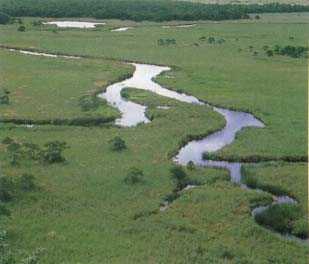 Ramsar site (Kushiro-shitsugen) |
In Japan, so far there are nine Ramsar sites (designated wetlands for inclusion in a List of Wetlands
of International Importance).
(4) Migratory Bird Conventions and Agreements
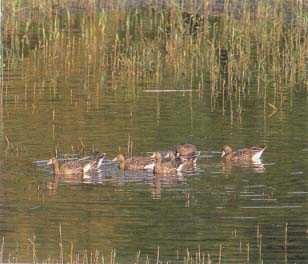 Migratory Birds (Geeses) (Katano-Kamoike) |
(5) The World Heritage Convention
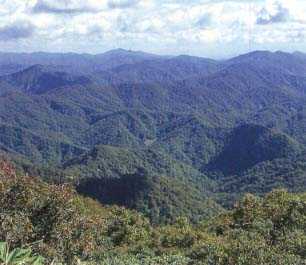 The World Heritage (Shirakami-sanchi) |
Japan became member state of the Convention for the Protection of the World Cultural and Natural Heritage (The World Heritage Convention) in 1992 and was elected as a member of the World Heritage Committee. The Committee determined in 1993 to inscribe two natural areas in Japan, "Shirakaml-sanchi" and "Yakushima (Yaku-island)" on the World Heritage List as first two natural heritage sites in Japan. The conservation measures are taken for these areas in accordance with relevant national legislation, such as the Nature Conservation Law and Natural Parks Law.
| 8. | International Cooperation for Nature Conservation |
| 8.2 | Assistance to Developing Countries |
(1) International Assistance by the Environment Agency
The Environment Agency assists developing countries in Asia-Pacific and other regions in Global Environmental Issues and consolidation of their administrative basis towards the implementation of Agenda 21. Main areas of assistances in nature conservation are as follows.
- Wetland Conservation in Asian Region
- Publication of Red Data Book for Birds of Asian Region
- Conservation Measures of World Natural Heritage in Asia
- Conservation of Coral Reefs
- Investigation of Biodiversity in Asia
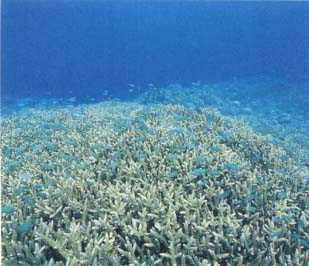
Conservation of the World Natural Heritage
(Tubbataha Reef National Marine Park, The Republic of the Philippines)
(2) International Assistance through Technical Cooperation of JICA
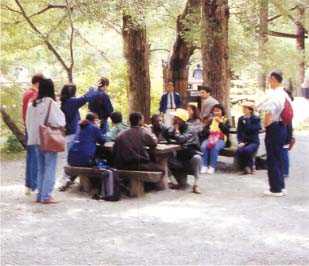 Group Training Course |
(A) Acceptance of Trainees:
Three Group Training Courses, "Nature Conservation and Natural Parks Management (for 30 days),"
"Wetland Conservation and Protection of Migratory Birds (for 30 days)" and "Conservation
and Sustainable Management of Coral Reefs (for 40 days)" are implemented every year.
(B) Dispatch of Experts :
For technology transfer, Long-term or Short-term Dispatch of Experts in Nature Conservation are dispatched
to developing countries in Asia, Africa and Latin America and so on. Specific themes include National
Park Management. Wildlife Management, and Natural Environment Survey.
(C) Project-type Technical Cooperation:
There are several cases for Project-type Technical Cooperation, which combines the dispatching of
experts, acceptance of trainees and other means. For example, the cooperation for wildlife conservation
in Yacyreta, Paraguay was implemented from FY 1991 to 1994. A project for conservation of biodiversity
in Indonesia has been done since FY 1995.
Ministry of the Environment Government of Japan |